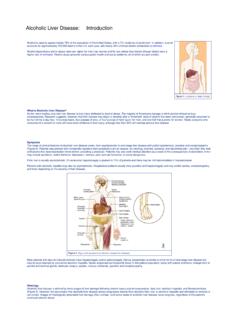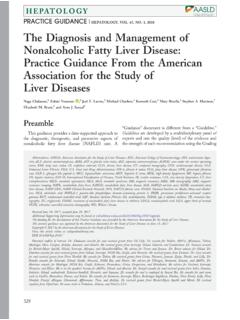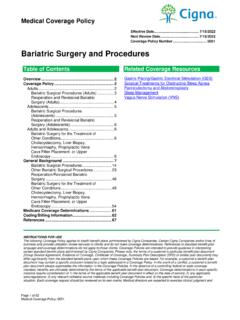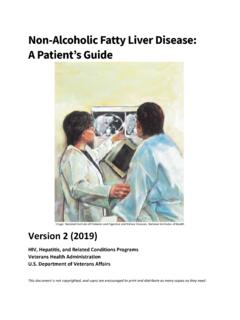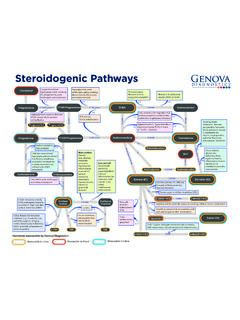Transcription of Management of Hypertriglyceridemia: Common Questions …
1 Date xx, xxxx Volume xx, Number xx American Family Physician 1 Published online June 3, 2020 Hypertriglyceridemia is defined as fasting serum tri-glyceride levels of 150 mg per dL ( mmol per L) or higher. Elevated triglyceride levels (150 to 499 mg per dL [ to mmol per L]) are associated with increased risk of cardiovascular disease (CVD), and severely elevated lev-els (500 mg per dL [ mmol per L] or higher) are asso-ciated with increased risk of pancreatitis. (Ta b l e 1).1 This article answers commonly asked Questions related to the Management of Are the Risk Factors for Hypertriglyceridemia?
2 Common risk factors are obesity, metabolic syndrome, and type 2 diabetes mellitus. Less Common risk factors include excessive alcohol use (more than two standard drinks daily in men and more than one standard drink daily in women), physical inactivity, being overweight, use of certain medi-cations ( , atypical antipsychotics, antiretroviral protease inhibitors, beta blockers, bile acid binding resins, corticoste-roids, estrogens, immunosuppressants, isotretinoin, thiazide diuretics), and genetic ,3 Risk factors for hypertri-glyceridemia are summarized in Table 2.
3 1,2,4 EVIDENCE SUMMARYH ypertriglyceridemia is associated with increasing age, higher body mass index, elevated blood glucose levels, ele-vated total cholesterol, and reduced high-density lipopro-tein (HDL) cholesterol. Up to 33% of adults in the United States have triglyceride levels of 150 mg per dL or In studies using a cutoff of 200 mg per dL ( mmol per L), of patients had elevated triglyceride levels, and to had severely elevated triglyceride ,6 In one study, of patients had triglyceride levels of 1,000 mg per dL ( mmol per L) or of Hypertriglyceridemia: Common Questions and AnswersRobert C.
4 Oh, MD, MPH, Madigan Army Medical Center, Tacoma, WashingtonEvan T. Trivette, MD, Army Medical Center of Excellence, Joint Base San Antonio-Fort Sam Houston, TexasKatie L. Westerfield, DO, Martin Army Community Hospital, Fort Benning, GeorgiaHypertriglyceridemia, defined as fasting serum triglyceride levels of 150 mg per dL or higher, is asso-ciated with increased risk of cardiovascular disease. Severely elevated triglyceride levels (500 mg per dL or higher) increase the risk of pancreatitis. Common risk factors for hypertriglyceridemia include obesity, metabolic syndrome, and type 2 diabetes mellitus.
5 Less Common risk factors include excessive alcohol use, physical inactivity, being overweight, use of certain medications, and genetic disorders. Management of high triglyceride levels (150 to 499 mg per dL) starts with dietary changes and physical activity to lower cardiovascular risk. Lowering carbohydrate intake (especially refined carbohydrates) and increasing fat (especially omega-3 fatty acids) and protein intake can lower triglyceride levels. Moderate- to high-intensity physical activity can lower triglyceride levels, as well as improve body composition and exercise capacity.
6 Calculating a patient s 10-year risk of atherosclerotic cardiovas-cular disease is pertinent to determine the role of medications. Statins can be considered for patients with high triglyceride levels who have borderline (5% to ) or intermediate ( to ) risk. For patients at high risk who continue to have high triglyceride levels despite statin use, high-dose icos-apent (purified eicosapentaenoic acid) can reduce cardiovascular mortality (number needed to treat = 111 to prevent one cardiovascular death over five years). Fibrates, omega-3 fatty acids, or niacin should be considered for patients with severely elevated triglyceride levels to reduce the risk of pancreatitis, although this has not been studied in clinical trials.
7 For patients with acute pancreatitis associated with hypertriglyceridemia, insulin infusion and plasmapheresis should be considered if triglyceride levels remain at 1,000 mg per dL or higher despite conservative Management of acute pancreatitis. (Am Fam Physician. 2020;102:online. Copyright 2020 American Academy of Family Physicians.)June 3, 2020 Online American Family Physician 1 CME credit for this article will be available when it is pub-lished in print. Author disclosure: No relevant financial DIGITAL CONTENTD ownloaded from the American Family Physician website at Copyright 2020 American Academy of Family Physicians.
8 For the private, non-commercial use of one individual user of the website. All other rights reserved. Contact for copyright Questions and/or permission from the American Family Physician website at Copyright 2020 American Academy of Family Physicians. For the private, non-commercial use of one individual user of the website. All other rights reserved. Contact for copyright Questions and/or permission American Family Physician Volume xx, Number xx Date xx, xxxxHYPERTRIGLYCERIDEMIAA fter hypertriglyceridemia is identified, the patient should be assessed for Common and secondary causes.
9 Common risk factors for hypertriglyceridemia include obesity, metabolic syndrome, and type 2 ,3 The National Health and Nutrition Examination Survey showed that 80% of the population have one or more criteria for metabolic Other risk factors include excessive alcohol consump-tion (more than two standard drinks daily for men and more than one standard drink daily for women), physical inactivity, being overweight, medication use, endocrine disorders, and autoimmune Other genetic syndromes cause hypertri-glyceridemia but are beyond the scope of this Is the Clinical Signif icance of Hyper tri gly ceri demia?
10 The American College of Cardiology/American Heart Association cholesterol guidelines list hypertriglyceridemia as a risk-enhancing factor for ,8 It is also a component of metabolic syn-drome and is a feature of atherogenic dyslipidemia (hypertriglyceridemia and low HDL cholesterol levels). Despite the association between hypertriglycer-idemia and CVD, studies have not demonstrated a reduction in cardiovas-cular events or deaths with the treat-ment of isolated hypertriglyceridemia.










